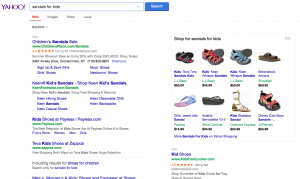When packages go missing, both your reputation and bottom line suffer. Contributor Tom Mucklow explains what you can do to avoid delivery snafus and prepare for the holiday rush.
 Did you hear the story about the dog biscuits that spent a month and nearly 2,500 miles bouncing around the country in search of their owner?
Did you hear the story about the dog biscuits that spent a month and nearly 2,500 miles bouncing around the country in search of their owner?
When the treats’ sender in St. Louis made a small error in the ZIP code of the package, intended for her son in Santa Monica, it threw the US Postal Service into total disarray. With just a single digit off, the holiday gift went to Mountain View instead. But, with the post office’s internal system unable to recognize the intended address, and customer service at the busiest time of year, the package was sent back, and vice versa, for weeks on end. By the time the gift was received, it was likely nothing but crumbs.
It is called, in postal terms, UAA — undeliverable as addressed — and, with the USPS handling 750 million packages during the holiday season, it’s a stark reminder that, to avoid disappointment, loved ones and mail order retailers alike need to ensure the accuracy of the addresses they use. Every year, the cost of redelivery is estimated at $20 billion, with USPS picking up an over $1.5 billion tab (PDF).
The issue occurs when the post office attempts to deliver an item that has been incorrectly addressed. While this is sometimes a result of human error, addresses themselves also change — buildings get knocked down, and new ones are built in their place.
To cope with peak-time demand of this festive season, retailers and brands need to prioritize integrity and avoid operational errors related to delivery ahead of the big holiday rush.
The high cost of undelivered goods
While delivery and customer service issues are unfortunate at any time of year, the problem increases exponentially during the holiday shopping season. During the holidays, e-commerce revenue can grow by 30 percent, making undelivered packages an operational disaster.
To further complicate matters, many consumers tend to delay shopping until the last minute, compressing the fulfillment window and leaving businesses and delivery services too overloaded to triage individual issues.
But one of the biggest causes of UAA is out-of-date address lists. Did you know that the USPS, which handles 47 percent of the world’s mail volume (PDF), makes 37 million changes to its US address data file every year?
It’s a very expensive issue, and the increased volume of international orders means online retailers have to send gifts to countries with exotic address formats, increasing the likelihood of failed deliveries.
Don’t get social media shamed
At this time of year, the cost of losing little Johnny’s Christmas gift also adds up to a reputational injury that can be amplified further through word of mouth — downgraded online reviews and lost customers are just a couple of consequences that stem from delivery failures.
Nowadays, negative customer feedback can go viral in seconds on sites such as Facebook, Instagram and Twitter. Just ask any of the major airline operators in the country; all have been publicly flogged on social media for transgressions. When orders go missing, brands risk incurring the wrath of the public, which can be felt especially hard during the holidays.
Quality data and asking for the right info
Sometimes, it isn’t the customer’s fault. You would be amazed at how many online retailers make it hard for customers to even enter the right information.
To increase the chances that an address is entered accurately, forms need to be exceptionally clear, responsive and easy to use regardless of input device. Also, the retailer’s data quality must be top-notch.
Databases cannot be polluted by bad or out-of-date addresses. It’s far more difficult and time-consuming to correct collected data than it is to validate the data at the point and time of collection.
Basically, you’d rather verify bad information on its way in, not just out.
Validate or bust
Brands should equip themselves with ways to streamline the online customer experience. One way is having a sophisticated address verification tool, along with a quality database running behind a smart validation algorithm that can check all fields entered by a user and match the information to a valid address in the USPS database. (Disclosure: Among the possible solutions available to address this problem is a platform offered by my company, Addressy.)
The problem with many solutions is that they still require a user to type an entire address before it can be validated. A smart location intelligence tool can decrease the number of keystrokes required to fill out a form.
You should also look for a solution that can account for user errors and typos and is as near to real-time as possible. Typing errors are common on web forms — especially when using mobile devices — so it’s important for the verification tool you use to be able to recognize these common errors.
Speak global languages
If you can’t do this on the front end, you risk forcing customers to jam the destination address into your existing fields, raising the likelihood of undelivered mail and frustrated customers. So ensure your verification system can verify and format global address formats as well as search for addresses in different languages and character sets.
If a customer in Kentucky wants to send a holiday gift to her auntie in Hyderabad, you had better be sure your systems can cope with multiple address formats. A seemingly small data input error could mean the difference between Rome, Texas and Rome, Italy.
Technology has completely changed consumer expectations. Just like other institutions, retailers need to adapt to the expectations of their customers and make sure they’re effectively delivering goods during the most critical time of year.
Some opinions expressed in this article may be those of a guest author and not necessarily Marketing Land. Staff authors are listed here.
Marketing Land – Internet Marketing News, Strategies & Tips
(73)








